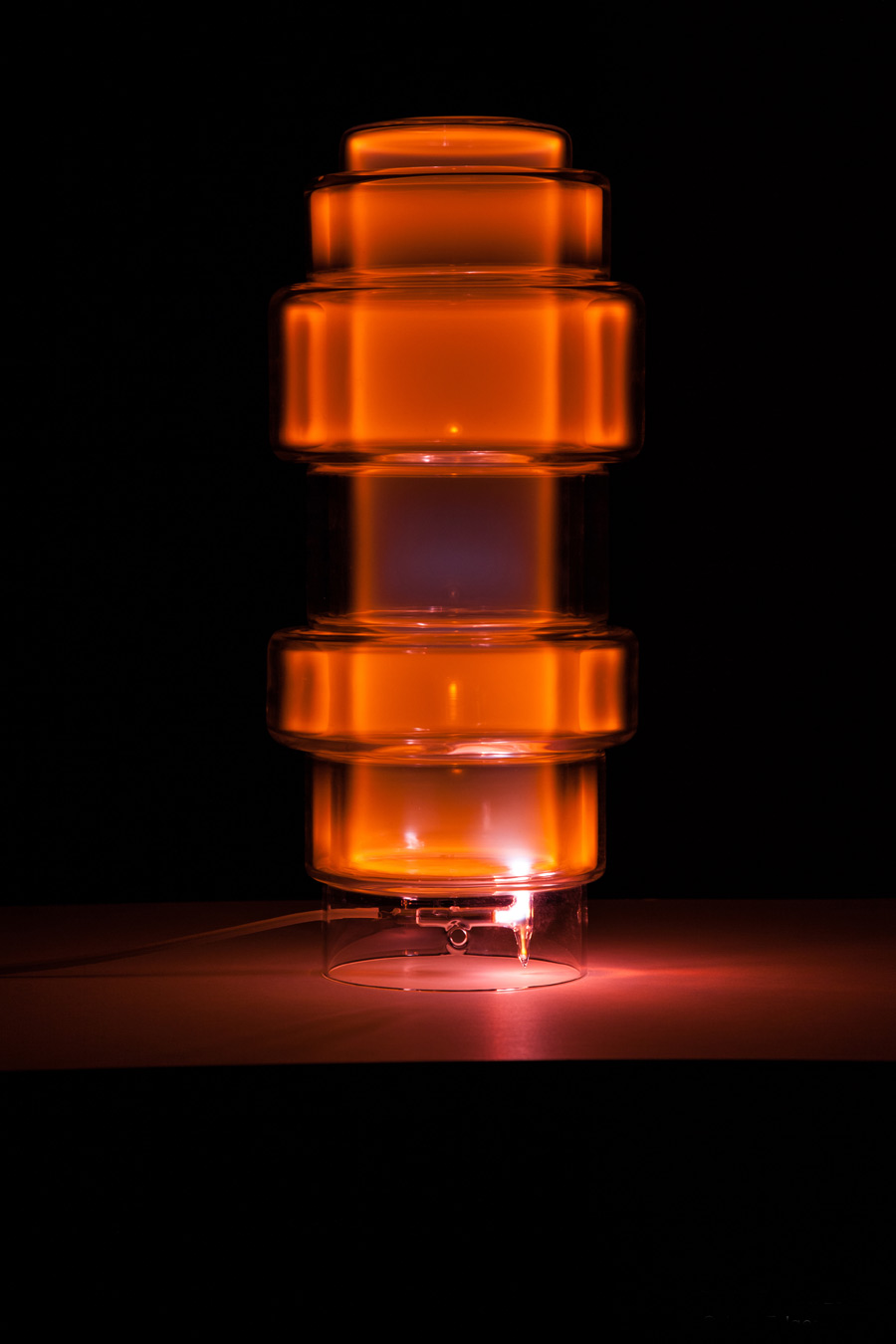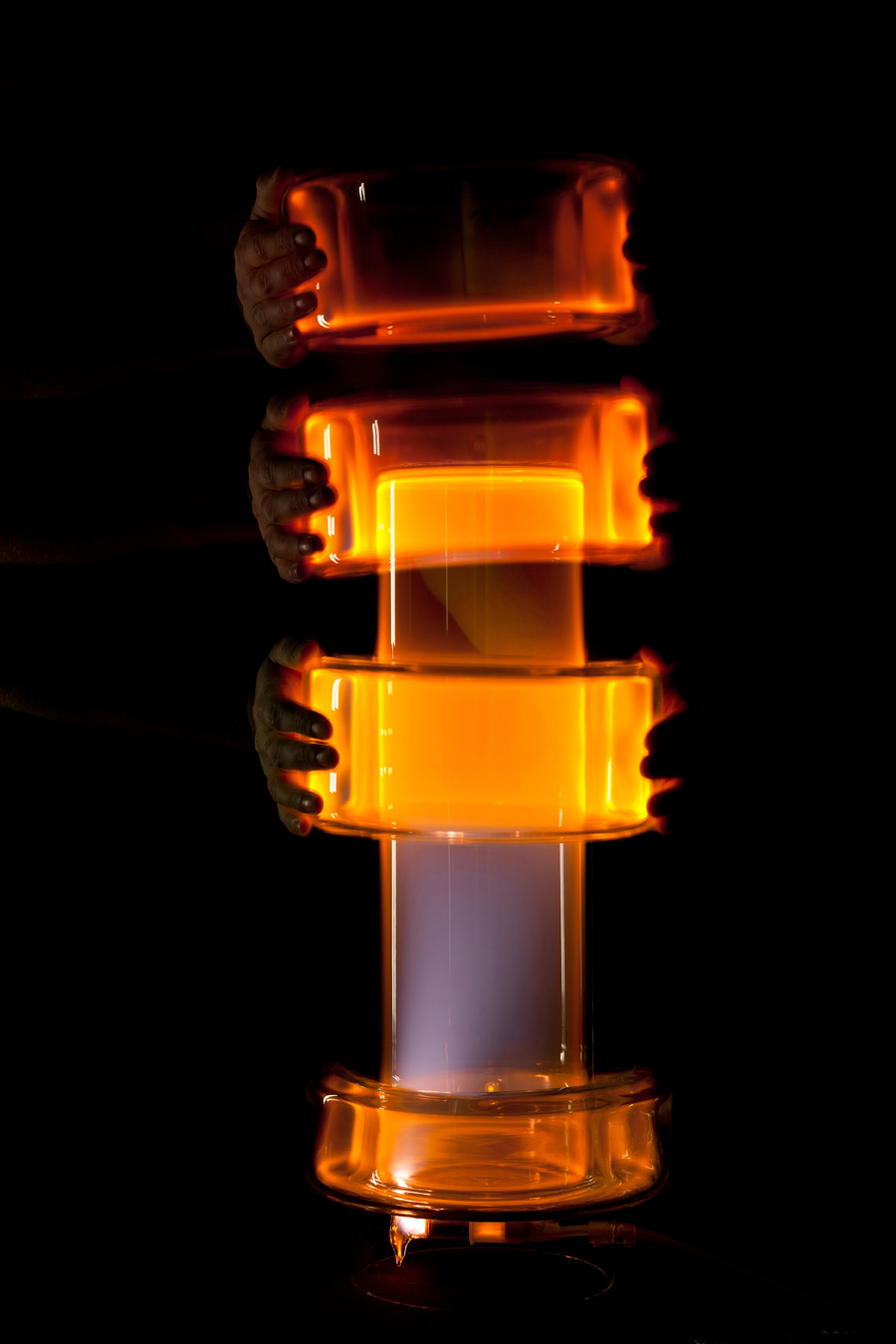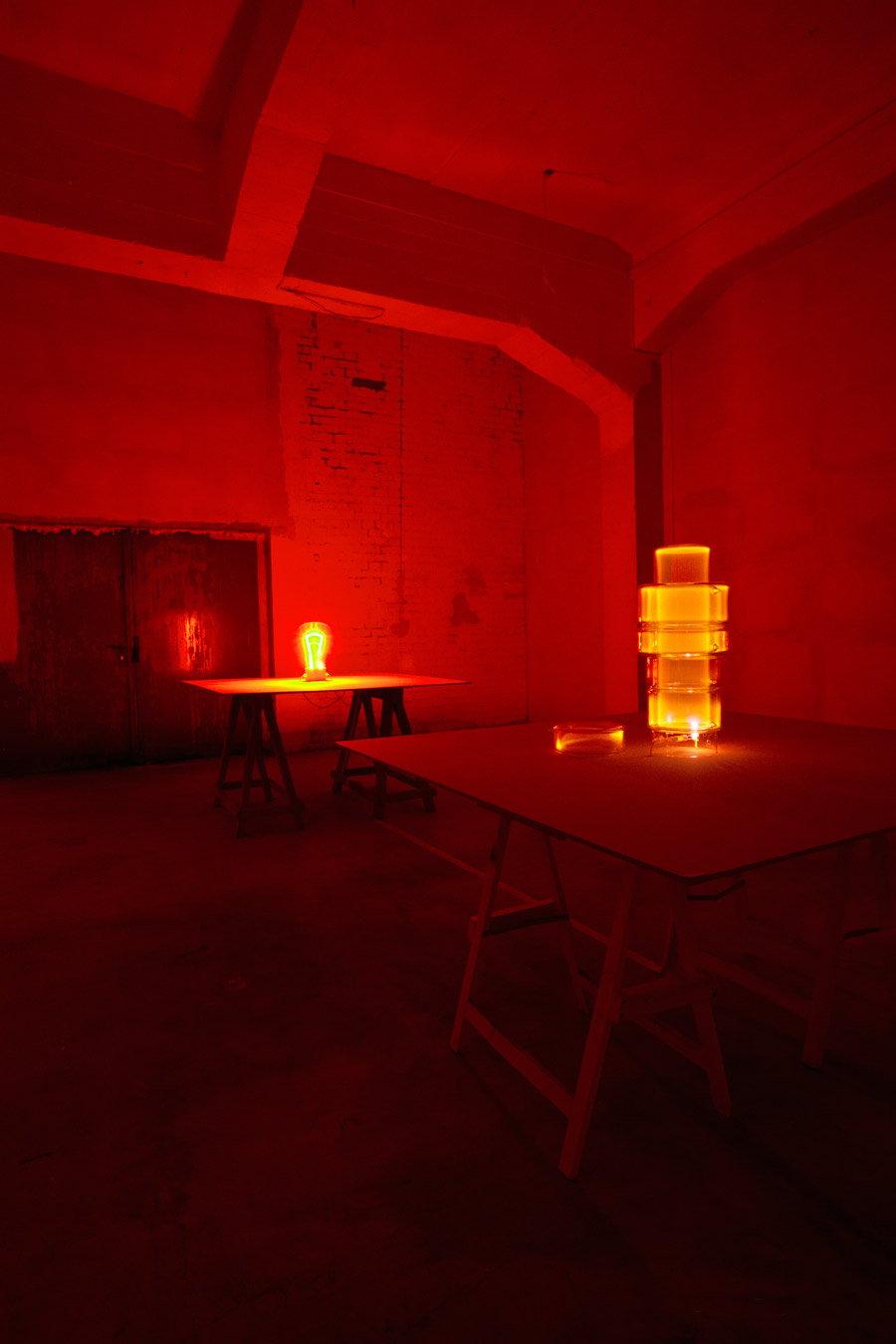Interview: Aiko Telgen
We talk to the designer about his glowing plasma Ion Two lamp at Milan Design Week


Almost completely hidden in a small, dark booth inside Zona Tortona’s Temporary Museum of New Design, German designer Aiko Telgen presented Ion Lamps, one of our favorite finds at this year’s Milan Design Week so far. The captivating Ion Two—the newest addition to Telgen’s line—looks like a bubble that has trapped a spirit like a luminescent ghost or a glowing genie.
The Ion Two is built around a central glass cylinder, which serves as the base for additional glowing glass rings. Every part of the lamp is filled with inert neon gas and, through a special process, the neon is turned into plasma so that the light looks more gentle and delicate than what shines through a regular neon tube. Plus, the plasma reacts to the presence of body heat, making the light more intense in the exact point where someone touches the glass. Plasma can also be manipulated by magnetic fields, so the different ionic charges illuminate when they come in contact with each other or become closer together. As a result, the user can create different intensities of light by adding, subtracting or moving the rings around.
We were able to speak to the designer to learn more about the Ion’s very interesting use of technology to turn science into something magical, and the process behind constructing the system.


How was the project born? How did you discover this technology?
The Ion Lamp Series (Ion One and Ion Two) is my graduation project which I did at the School of Art and Design Kassel in Germany. I began this exploration of light with the theme, “A Floating Light,” and started my research about everything around the topics of floating elements and the nature of light. When I visited a small neon sign factory in East Germany I got a first impression of the technology and realized the difference between fluorescent light (generated by UV light), which is widely known and used, and the pure light of plasma. The plasma process is usually hidden inside fluorescent tubes but has a very special appearance. When I saw this for the first time I instantly had the feeling that this could be a solution to my starting point. I then got deeper into the topics of plasma and neon technology and looked into the experimental research of several people like Nikola Tesla, Dan Flavin and James Turrell.

What is the process of making the lamp? Is it more artisanal or technological?
I would describe the process of making it as both artisanal and technological. The glass pieces are manufactured out of semi-finished glass tubes by a glass laboratory supplier. They are not blown into a wooden mold—this wouldn’t work because of the specific geometry of the glass rings. The finished glass pieces are then transported to a neon laboratory where they are put into an oven and vacuumed with a turbo pump. After this process you have to fill in the neon gas, taking care of the different volumes of the glass cavities, since each one needs a different pressure.


What’s the difference between regular neon gas and plasma?
One explanation which describes plasma very well is the comparison between water and ice. When water freezes and becomes ice you see a change of state to a state of matter. The same happens here with the neon gas, it changes the state from gas to a neon plasma, the fourth state of matter.
Do you think this is a suitable object for mass production?
I don’t think it’s possible—at least with this version—to make a mass production piece out of it, because of the quite complex glass work. With this version I would prefer to make a small series. But of course a third, more simple version with less complexity could be mass produced.
Images by Aiko Telgen and Florian Seemüller












